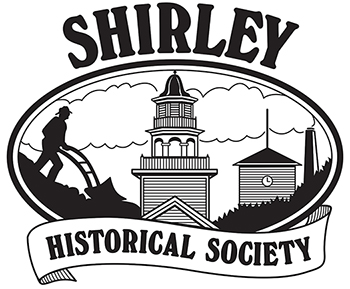Earl S. Tupper
Biographical/Historical Information by Mimi Minnick of the National Museum of American History
(With local notes in italics.)
Earl Silas Tupper was born in 1907, to a New Hampshire farming family of modest means. During his youth and boyhood in New England, his mother Lulu Clark Tupper, took in laundry and ran a boarding house, while his father, Earnest Leslie operated a small family farm. Earnest Tupper loved to tinker, developing labor-saving devices for the farm and family greenhouses; one of his devices, a frame to facilitate the cleaning of chickens, was granted a patent. (They lived in an old mill for a while at the end of Hazen Road, on the banks of the brook. The greenhouses were were further up Hazen Road. )
It is from his father that Earl Tupper is said to have developed a love for invention. Even as a boy, Tupper showed an enterprising and entrepreneurial spirit. At the age of 10, Earl discovered he could move more of the family’s produce by selling door-to-door, bringing the product directly to the customer. After high school graduation in 1925, Tupper continued to work in the family greenhouses in Shirley Massachusetts for
two years. Tupper was an ambitious young man, though, and he was determined to earn his first million by the time he was thirty.
(There are stories of how he asked his Shirley friends to invest in his inventions and they declined.)
During the twenties, he set out on a number of different paths, including work as a mail clerk and on a railroad labor crew. In 1928, he took a course in tree surgery, with the idea of setting up his own tree surgery and landscaping business. He continued to help out with the family business, and got married in 1931. Through the early thirties, the landscaping and nursery business continued to grow and thrive, despite the Depression, enabling Tupper to pursue some of his ideas and inventions. His scientific notebooks for this period reflect the diversity of his interests. Even after Tupper Tree Doctors was forced into bankruptcy in 1936, Tupper remained optimistic about his ability to develop and manufacture some of his inventions.
In 1936, Tupper met Bernard Doyle, the inventor of Viscoloid, the plastics manufacturing division of DuPont, located in nearby Leominster, Mass. He went to work for DuPont in 1937, but stayed there only one year. Later, Tupper would say it was at Dupont “that my education really began.” Tupper took the experience he had gained in plastics design and manufacturing at DuPont, and struck out on his own. In 1938, he formed the Earl S. Tupper Company, advertising the design and engineering of industrial plastics products in Leominster, Massachusetts. Much of the fledgling company’s early work was performed under subcontract to DuPont. Business was good during the war, because despite the difficulty of acquiring the raw materials necessary for plastics production for the domestic market, Tupper Plastics was able to garner several defense contracts, molding parts for gas masks and Navy signal lamps. After the war, Tupper turned his attention to developing plastics for the growing consumer market. Many of his earliest designs, which included plastic sandwich picks, cigarette cases, and an unbreakable tumbler for the bathroom, were offered as premiums with other products. For example, Tek toothbrushes offered the tumbler with purchase of a toothbrush, and cigarette companies and other businesses offered cigarette cases imprinted with their logo.
Plastics was still in its infancy in the forties, and the commercial market for plastics product was limited by plastic’s reputation for being brittle, greasy, smelly and generally unreliable. Tupper’s contributions were twofold. First, he developed a method for purifying black polyethylene slag, a waste product produced in oil refinement, into a substance that was flexible, tough, non-porous, non-greasy and translucent. Second, he developed the Tupper seal, an airtight, watertight lid modeled on the lid for paint containers. Together, these innovations laid the foundations for the future success of Tupperware. Nevertheless, marketing the new product presented a challenge. Tupper experimented with department store sales, but as Businessweek magazine reported in 1954, “in retail stores it fell flat on its face.” It seemed clear that the new lid required explanation or demonstration.
In the late 1940s, Thomas Damigella (in Massachusetts) and Brownie Wise (in Florida) were selling household products through Stanley Home Products. Purchasing through local plastics distributors, both began offering Tupperware as part of their product line, and were moving enough Tupperware to attract Earl Tupper’s attention. In 1948, Tupper met with Damigella, Wise, and several other local distributors at a Sheraton in Worcester Massachusetts to discuss a new distribution plan. Modeled on the home party plan pioneered by Stanley Home Products and expanded and refined by Brownie Wise, the home party plan became and remains the exclusive outlet for Tupperware. Wise was named Vice President of the company (named Tupperware Home Parties) in 1951, a position she held until 1958, when Tupper sold the company to Rexall for $16 million. Tupperware’s success stems from the combined genius of Earl Tupper, the self-styled Yankee inventor and entrepreneur and Brownie Wise, the consummate saleswoman and motivator.
Tupper invested in other companies and donated to certain causes.
He eventually moved to Costa Rica, giving up his U.S. citizenship to avoid taxes.
After listening to Lucy Longley talk about the need for a Shirley History Museum, he gave the money to blast the cellar hole and hire an architect and contractor and build the current Museum. He was here for the groundbreaking in 1981.
Tupper died on October 5, 1983.
